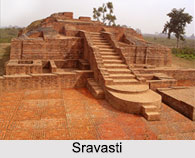 Ancient West Indian Cities are Dwaraka, Somnath, Bhuj and Dholavira. These ancient cities are now completely in ruins. Some of the places are under the waters of Arabian Sea, while some are the archaeological ruins are under the maintenance of Archaeological Survey of India.
Ancient West Indian Cities are Dwaraka, Somnath, Bhuj and Dholavira. These ancient cities are now completely in ruins. Some of the places are under the waters of Arabian Sea, while some are the archaeological ruins are under the maintenance of Archaeological Survey of India.
The modern western India consists of Goa, Gujarat, Maharashtra, Union Territory of Daman and Diu and Dadra and Nagar Haveli. Western India is bounded by the Thar Desert in the northwest, the Vindhya Mountain Range in the north and the Arabian Sea in the west. A major portion of Western India shares the Deccan Plateau with South India.
The civilization in west India started from 5000 BC and later came under the various dynasties like Rashtrakuta Empire, Maurya Kingdom, Gurjars, Rajputs, Satavahanas, Western Satraps, Indo Greeks and Kadamba Dynasty.
Dholavira
It is now an archaeological site in the modern Kutch District of Gujarat. From here, the proofs of Harappan settlements are found. The site was discovered in 1967-8 by J. P. Joshi ex. D.G. of Archaeological Survey of India and is the fifth largest of eight major Harappan sites. It has been under excavation since 1990 by the Archaeological Survey of India, which opines that Dholavira has indeed added new dimensions to the personality of Indus Valley Civilization.
Dwarka
Dwarka is the place of temples. This city was developed during the time of Lord Krishna. It is believed that Dwarka is the first capital of Gujarat. The Yadavas, who had migrated from Mathura, established their kingdom in Gujarat and made Dwaraka the capital. A population of Ahirs prompted Lord Krishna to settle at Dwarka when he decided, after fighting Jarasandha, the King of Magadh, to retreat from Mathura. The kingdom was known as the Ahir or Yadav Empire. It was established by Krishna, and flourished and extended its domain.
Bet Dwarka
Bet Dwarka or Shankhodhar is considered the part of the ancient city in Indian epic literature, Mahabharata. This city is known as the place where Lord Krishna resided. The remains of earthen pots and other artifacts of Late Harappan period were found near Sidi Bawa Peer Dargah.
Bhuj
Bhuj is also an ancient city in Gujarat. In the early era, Bhuj was ruled by Naga chieftains. Later in medieval era, Bhuj was dominated by the Hindu kings till British came into existence.
Lothal
It is an ancient port city, discovered in 1954, by the Archaeological Survey of India where Lothal was connected with West Asia and Africa for the import and export of metallurgy, beads, gems and valuable ornaments. The findings consist of a mound, a township, a marketplace, and the dock, which was known as the early dock in western India.



















